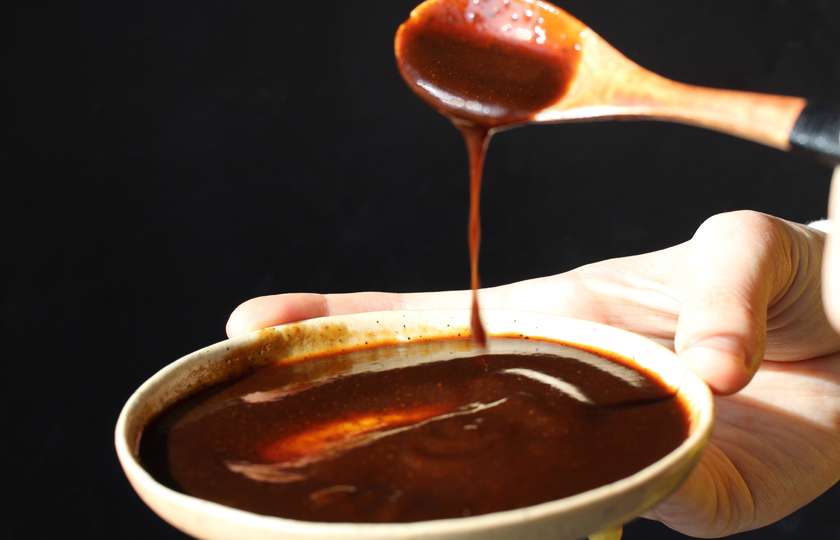What Is the Difference Between Shacha and Satay? Exploring the Flavor Differences

Many friends often have trouble distinguishing between shacha sauce and satay sauce. These two sauces have similar names in pronunciation and similar appearance in color, but their usage seems a bit different. Let's take a look today at what the differences are between shacha sauce and satay sauce.
Difference 1: Origin and Propagation Route
Shacha Sauce:
Origin: From the late 19th century to the early 20th century, overseas Chinese from Fujian and Guangdong introduced satay sauce to China and improved it to combine the flavors of Chaoshan and Fujian.
Key to Localization: Reduced the proportion of spiciness and coconut milk, and increased seafood elements (dried shrimps, dried fish) and the aroma of peanuts to adapt to the Chinese people's light, sweet and fresh eating habits.
Satay Sauce:
Origin: It originated on the island of Java in Indonesia. Initially, it was a dipping sauce paired with satay kebabs, and later spread to Southeast Asian countries such as Malaysia and Thailand along the Maritime Silk Road.
Cultural Attribute: Rooted in Nanyang cuisine, with a strong Muslim dietary color (mostly used beef and mutton in the early days).
A summary in one sentence: Satay is the "original Nanyang version", while shacha is the "Chinese improved version".
Difference 2: Core Ingredients and Recipes
Characteristics of Shacha Sauce Recipe:
Base: Fried peanut crumbs (20% - 30%), dried shrimps (10% - 15%), dried flounder (5% - 8%).
Core Spices: Kaempferia galanga, five-spice powder, crispy scallions and garlic, chili powder.
Seasoning: Light soy sauce, white sugar, lard or beef tallow (commonly used in the Chaoshan version).
Characteristics of Satay Sauce Recipe:
Base: Peanut butter (accounting for about 40% - 50%), coconut milk (20% - 30%).
Soul Spices: Lemongrass, galangal, lesser galangal, lemon leaves, curry powder.
Seasoning: Palm sugar (or coconut sugar), tamarind juice (providing sour taste), fish sauce.
Typical Difference: Shacha sauce uses seafood to enhance freshness, while satay sauce relies on coconut milk to add fragrance.
Difference 3: Texture and Taste
Shacha Sauce:
Texture: It has a strong granular texture (due to the presence of peanut crumbs and dried shrimp powder), and the state of oil and sauce separation is common.
Taste: It is mainly salty and fresh, with a hint of sweetness and spiciness. The aroma of nuts and the taste of seafood are intertwined, and the aftertaste of spices is more Chinese-style (five-spice powder, Kaempferia galanga).
Satay Sauce:
Texture: Thick and smooth (the result of the fusion of coconut milk and peanut butter), similar to curry paste.
Taste: It is prominently spicy and sweet, with an obvious sour taste (from tamarind), and has a coconut fragrance and herbal aroma (lemongrass, lemon leaves).
Difference 3: Appearance and Texture
Shacha Sauce:
Looking at the appearance, shacha sauce is brownish-red or dark brown. The texture is delicate but slightly thick, somewhere between a sauce and a paste.
This is because during the production process, dried seafood and nuts need to be fully ground, while retaining a small amount of granular texture (such as dried shrimp crumbs and peanut crumbs) to form a unique taste layer.
A high-quality shacha sauce will have a thin layer of gloss on the surface (from the oil during frying). After stirring, the sauce is smooth and sticky, and can evenly adhere to the surface of the ingredients.
Satay Sauce:
The color of satay sauce is more inclined to golden yellow or light brown. Its texture is thicker and heavier, approaching the consistency of peanut butter.
Due to the high peanut content and fine grinding, there are hardly any obvious particles in the sauce. In the Southeast Asian market, some commercially available satay sauces add starch or coconut milk to adjust the texture, making it less likely to separate during high-temperature cooking and presenting a smooth, creamy texture.

Difference 4: Flavor and Taste
Shacha Sauce: A Gust of Salty, Fresh and Spicy Flavors
The flavor of shacha sauce is extremely impactful. The first bite brings a strong salty and fresh taste (from seafood and soy sauce), followed by the spread of the nutty aroma of peanuts and sesame seeds in the mouth. The aftertaste has the spiciness of chili and five-spice powder, with rich and dynamic layers.
This complex flavor is particularly suitable for pairing with meats (such as beef and mutton) and offal (such as pig intestines and beef tripe). It can not only remove the fishy smell and relieve greasiness but also enhance the mellow flavor of the ingredients. For example, in Chaoshan beef hot pot, shacha sauce is the standard dipping sauce. Its salty, fragrant and slightly spicy characteristics complement the tender beef perfectly.
Satay Sauce: A Tropical Flavor of Sweet, Spicy and Coconut
The flavor of satay sauce is more gentle and full of tropical flavors. The entrance is first the sweet aroma of peanuts and the fresh sweetness of coconut milk, followed by the slight spiciness of chili, and finally ending with the salty freshness of shrimp paste and the delicate aroma of lemongrass.
This sweet-spicy intertwined and coconut-rich taste is very suitable for pairing with ingredients such as chicken, pork, and seafood. It can not only highlight the original flavor of the ingredients but also add an exotic flavor. A typical usage example is Indonesian satay kebabs. After marinating the kebabs in satay sauce and then grilling them, the outside is crispy and the inside is juicy. The sweet, spicy and coconut flavor of the sauce blends perfectly with the meat aroma.
Difference 5: Cooking Uses and Scenarios
Shacha Sauce:
Shacha sauce has a very wide range of uses in Chinese cuisine and can be called a "universal sauce":
Hot Pot Dipping Sauce: In Chaoshan and Fujian-style beef hot pots and shacha hot pots, shacha sauce is the soul dipping sauce. Paired with ingredients such as beef and tripe, it enhances the freshness.
Stir-fry Seasoning: Used for stir-frying seafood (such as shacha stir-fried clams), meat (such as shacha beef), and vegetables (such as shacha water spinach), injecting a salty, fragrant and slightly spicy flavor into the dishes.
Stewing and Braising: Adding shacha sauce to dishes such as stewed beef brisket and braised tofu, the sauce can penetrate into the ingredients and form a rich sauce.
Pasta Companion: When mixing or stir-frying noodles, add shacha sauce and pair it with ingredients such as bean sprouts and sausage to make a bowl of shacha noodles with a unique flavor.
Satay Sauce:
Satay sauce plays a "flavor core" role in Southeast Asian cuisine:
Satay Dipping Sauce: As a dipping sauce for satay kebabs, directly paired with satay for eating, which is a classic way of eating in Southeast Asian street food.
Stir-fry Sauce: Used for stir-frying Indonesian fried rice (Nasi Goreng), Malaysian char kway teow (Char Mee), etc., adding the aroma of peanuts and coconut to the staple food.
Cold Dish Seasoning: When making salads or cold dishes, add satay sauce, lemon juice, fish sauce, etc. to make a sauce with a balanced sweet, sour and spicy taste, suitable for pairing with vegetables and vermicelli.
Curry Base: In some Southeast Asian curries, satay sauce is used as one of the base sauces, simmered together with coconut milk and curry powder to form a unique sweet and spicy curry flavor.
Can Satay Sauce Replace Shacha Sauce?
It can be used as an emergency substitute, but the recipe needs to be adjusted!
Substitution tips:
Reduce sweetness and increase saltiness: Combine satay sauce with light soy sauce and fish sauce to counteract the excessive sweetness.
Add seafood flavor: Add shredded dried shrimp or dried scallop powder to mimic the umami of shacha sauce.
Dilute the thickness: Thin it with stock or plain water to prevent the sauce from being too thick.
Suitable scenarios:
For hot pot dipping sauce: A combination of satay sauce, minced garlic, and sesame oil can serve as a makeshift substitute.
For stir-fry seasoning: The amount used needs to be reduced to prevent the coconut flavor from overwhelming the dish.























